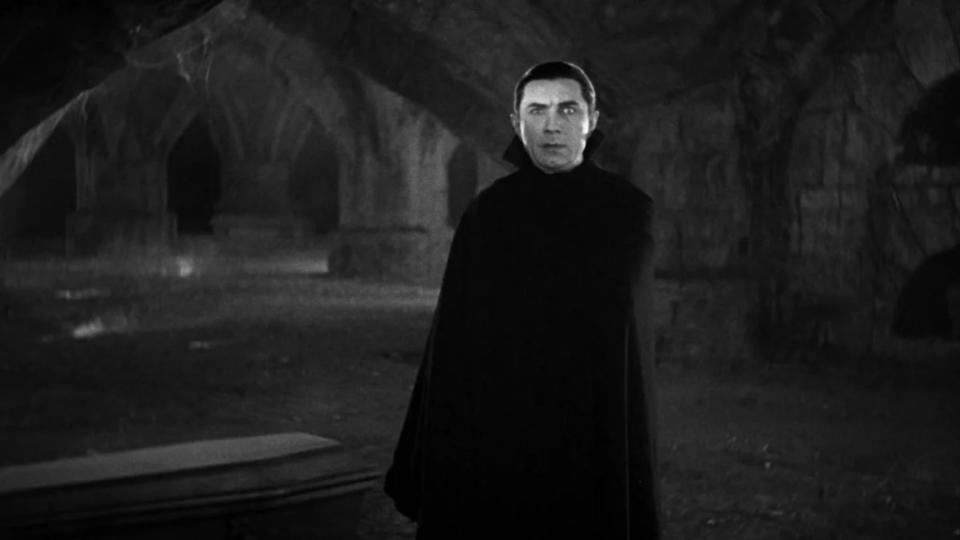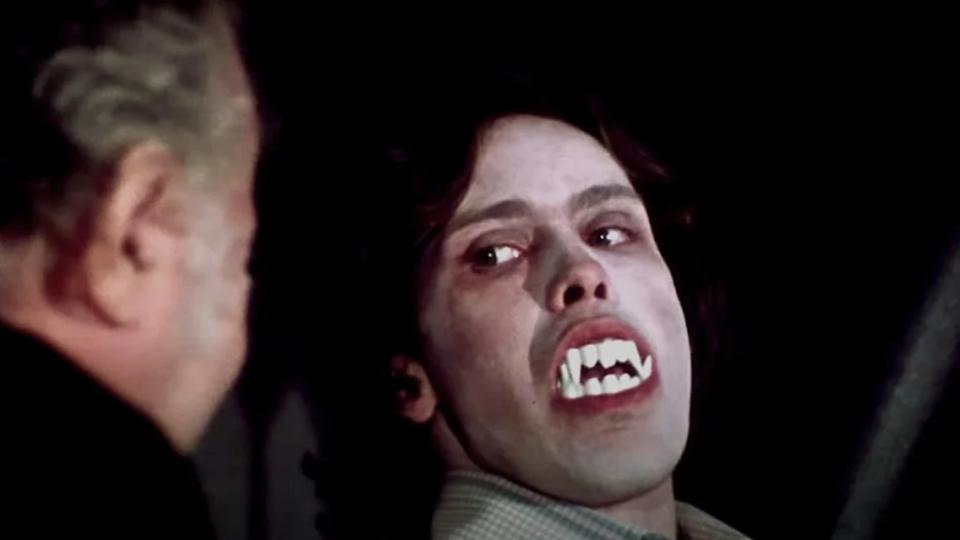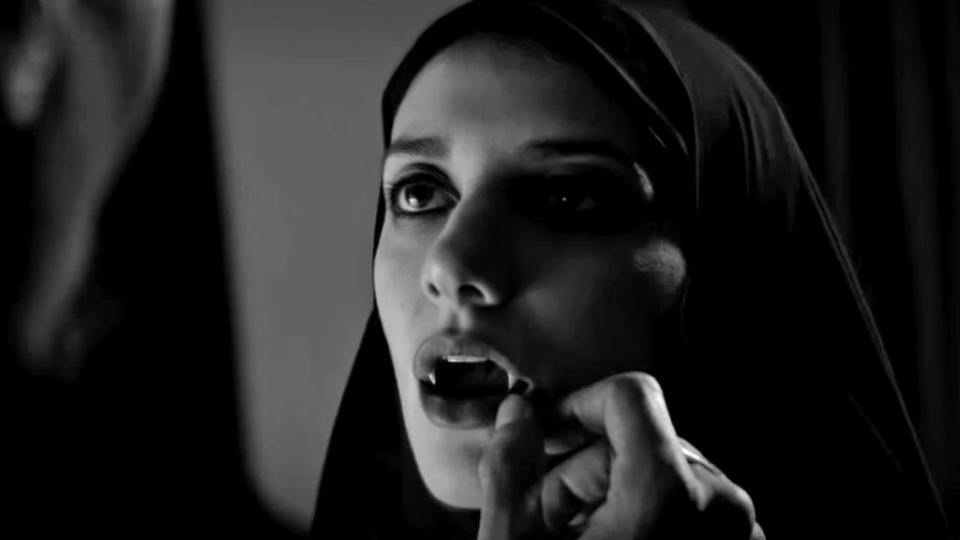The Best Vampire Movies of All Time
The vampire subgenre has been at the forefront of horror for over 100 years, and the myths of undead creatures living off of human blood go back countless years further. The best vampire movies ever made are, mostly, incredibly varied. There’s a whole lot of great “Dracula” movies out there, sure, but also art-house nightmares, mainstream action movies, silly comedies, Neo-westerns, heartwarming romances and more. And if you ask us, these are the very, very best.

“Nosferatu: A Symphony of Horror” (1922)
F.W. Murnau’s eerie silent classic is 100 years old, and it still has the power to shock and horrify. Telling an extremely plagiarized version of Bram Stoker’s “Dracula” – Stoker’s estate successfully sued, and nearly had every single copy of “Nosferatu” destroyed – the film stars Max Schreck as the verminous Count Orlok, who moves from his haunted castle to Germany, and brings a supernatural plague along with him. Almost every vampire film that followed lives in “Nosferatu’s” shadow.

“Dracula” and “Drácula” (1931)
Tod Browning’s official adaptation of “Dracula” stars Bela Lugosi in one of the most iconic performances in cinema history, lithe and alluring and predatory, with a sensual voice that lures young women to their willing deaths. The rest of Browning’s movie is a little stodgy, but George Melford’s Spanish-language version – filmed on the same sets, after Browning’s crew went home – flows elegantly. Carlos Villarías’s Dracula doesn’t have the same magnetism as Bela Lugosi’s. If he did, Melford’s “Drácula” would surely be considered the superior version.

“Vampyr” (1932)
Carl Theodor Dreyer’s dreamy vampire classic tells the story of sensitive young Allan Gray (Nicolas De Gunzburg), whose academic obsession with the occult leads him astray in a far-off village, with evil around every corner. “Vampyr” has masterfully languid pacing that lulls its audience into an impressionable state, just like the film’s protagonist, where the bizarre imagery can have the maximum impact. The film’s centerpiece – a funeral procession from the point of view of the corpse – is as morbidly fascinating as cinema gets.

“Horror of Dracula” (1958)
Christopher Lee makes his debut as Count Dracula, and the character would never be the same. The actor’s towering frame and confrontational sexuality give Terence Fisher’s “Horror of Dracula” a larger-than-life quality perhaps more akin to modern comic book movies than old-fashioned horror films. It only makes sense that “Horror of Dracula” spawned a sprawling franchise where Lee fought his arch-nemesis Dr. Van Helsing, played by the equally unforgettable Peter Cushing, multiple times, and always found a way to come back from the dead.

“The Vampire Lovers” (1970)
The jewel of Hammer Horror’s vampiric output is, still, one of the most sensuously queer horror movies ever produced. Based on Sheridan le Fans’s classic novel “Carmilla,” Ingrid Pitt stars as an impossibly beautiful vampire, forever inhabiting the body of a young lady, who ingratiates herself with innocent virgins and seduces them to their deaths. Naturally, the menfolk will have none of this. “The Vampire Lovers” was the first film in Hammer’s loosely connected “Karnstein Trilogy,” and easily the best.

“Martin” (1978)
George A. Romero’s rarely-discussed vampire thriller doesn’t actually have a vampire in it. Or then again, maybe it does. All that really matters is that Martin Matthias (John Amplas) thinks he’s a vampire, and if he has to resort to using narcotics instead of hypnotism, and razor blades instead of pointy teeth, so be it. Refreshingly modern and thematically complex, “Martin” is the “Night of the Living Dead” filmmaker’s unsung masterpiece, a vampire story for people who don’t believe in vampires but do believe in tragic, deadly obsession.

“Dracula” (1979)
John Badham’s sumptuous adaptation of “Dracula” is one of the finest, set amidst gloriously gothic architecture and boasting an otherworldly and ferociously sexy lead performance by Frank Langella, who wages battle against Laurence Olivier’s stalwart Van Helsing. This version of “Dracula” makes some odd and arbitrary changes to the original story, but the legendary vampire’s tale never felt more genuinely romantic than this.

“The Hunger” (1983)
Smoky and lurid, Tony Scott’s entrancing vampire tale stars Susan Sarandon as a doctor who gets swept up in a love triangle with two seductive vampires, played by Catherine Deneuve and David Bowie. The tragic twist in “The Hunger” is that vampires can’t stop themselves from aging forever, and Deneuve’s attic is full of mummified but still terrifyingly conscious former lovers. A film obsessed with beauty and the ethereal, “The Hunger” put the future “Top Gun” and “True Romance” director on the map.

“Fright Night” (1985)
A fiendishly clever rendition of Alfred Hitchcock’s “Rear Window” with a supernatural twist: Charley Brewster (William Ragsdale) doesn’t just think his hunky new neighbor Jerry Dandridge (Chris Sarandon) is a killer… he’s pretty sure Jerry’s a vampire! When nobody else will listen to him, Charley turns to a washed-up horror actor, Peter Vincent (Roddy McDowell), who gradually begins to believe his seemingly delirious young fan is onto something. Tom Holland (no, not that one, the other one) directed one of the first great meta-humor horror movies, with terrors and gags that really bite. (The remake is pretty good too.)

“Vampire Hunter D” (1985)
Toyoo Ashida’s influential anime masterwork “Vampire Hunter D” takes place over 10,000 years in the future, after the planet has been ruined by nuclear fallout, and supernatural creatures have reclaimed the land. In a plot right out of “Shane,” a young woman is bitten by a powerful vampire and hires a mysterious hunter named D to kill her tormentor and prevent her from turning into a monster. Excitingly produced in every way, with surreal story elements, gruesome monsters and weird sensuality. (Yoshiaki Kawajiri’s 2000 sequel, “Vampire Hunter D: Bloodlust” is also slick and satisfying, but the original still has the real power.)

“The Lost Boys” (1987)
Joel Schumacher’s riff on juvenile delinquent movies turns all those bad biker kids (allegedly) trying to corrupt your teens with drugs and alcohol into studly murder vampires, and the metaphor works great. Jason Patric gets all the tragic downfall drama, while Corey Haim, Corey Feldman and Jamison Newlander play the young kids who try to save the day using everything they learned about vampires from comic books. Stylish and funny, with an all-timer soundtrack and wicked monster effects. “The Lost Boys” is one of the cult phenomenons from the 1980s that still plays great, if more than a little retro, today.

“Near Dark” (1987)
Famously overshadowed by “The Lost Boys,” which came out only a few months earlier, Kathryn Bigelow’s vampire neo-western stars Adrian Pasdar as a hapless lovelorn cowboy who falls in with the wrong crowd, a gang of bloodsuckers who’ve been wreaking havoc in the American west since the Civil War (at least). Bill Paxton and Joshua John Miller steal the film as Severen, a homicidal maniac with fangs, and Homer, an old man torturously trapped inside a little kid’s body. Smart, vicious horror filmmaking at its finest.

“Vampire’s Kiss” (1989)
In case you were wondering, yes, this is the movie where Nicolas Cage actually ate a live cockroach. “Vampire’s Kiss” stars the Oscar-winner as a yuppie literary agent who’s losing his grasp on reality and becomes convinced that he’s turning into a vampire, wearing sunglasses wherever he goes, walking around with plastic novelty fangs, and eventually resorting to violence. But perhaps the most horrifying part of “Vampire’s Kiss” is the way Cage’s character psychologically tortures his assistant, played by Maria Conchita Alonso, in a surreal twist on despicable 1980s workplace dynamics. The whole film is bizarre and wicked, and Cage’s performance may very well be his greatest. Ever.

“Bram Stoker’s Dracula” (1992)
Francis Ford Coppola pulled out all the stops for his spectacular “Dracula” adaptation, which ambitiously transforms Stoker’s classic novel into a big-budget Hollywood phantasmagoria. Gary Oldman smolders as the title monster, the rest of the cast is an all-star cavalcade that includes Anthony Hopkins, Keanu Reeves, Winona Ryder, Richard E. Grant and even Tom Waits. “Bram Stoker’s Dracula” tries, and arguably succeeds, at being the sexiest version of this story so far. It’s certainly the most elaborate and outlandish.

“Cronos” (1993)
Guillermo Del Toro’s first feature film is an eerie low-budget fairy tale about a kindly antique dealer, played by the marvelous Federico Luppi, who accidentally unlocks a mysterious golden scarab that transforms him into a creature of the night. A dying millionaire wants the scarab, but the plot isn’t nearly as important or as poignant as watching Luppi, fully aware that he’s turning into a monster, desperately trying to do right by his granddaughter while he still can. To this day “Cronos” is one of Del Toro’s most heartfelt and beautiful works, and that’s saying something.

“Interview with the Vampire” (1994)
Neil Jordan’s adaptation of Anne Rice’s best-selling vampire tome takes the vampire’s side for a change, portraying the creatures most films demonized as tragically romantic figures capable of meaningful family relationships, and unexpected depths. Neil Jordan’s adaptation drops Brad Pitt and Tom Cruise in sets straight out of a pulpy romance novel, generous ladles on the queer subtext, and introduces Kirsten Dunst as a vampire struggling to come to terms with the fact that she’s trapped in the body of a young girl for eternity. A handsome and sometimes playful melodrama, “Interview with the Vampire” is the old-fashioned Hollywood epic about bloodsuckers that we never knew we always wanted.

“The Addiction” (1995)
Lili Taylor plays a young philosophy student who is attacked by a vampire, but her transformation isn’t purely physical. The descent into vampirism challenges every facet of her belief system, her identity, her self-control, and forms a powerful and mean-spirited metaphor for intellectually coming of age. Nobody ever knew how to film the streets of New York City better than Abel Ferrara, who gives this black-and-white horror story an unmistakable air of authenticity, and Lili Taylor and – in a brief but fantastic role – Christopher Walken give incredible performances.

“Blade” (1998)
Wesley Snipes plays a badass vampire hunter who, ironically enough, is himself half vampire. That’s the premise of “Blade,” the Marvel superhero movie that was such an unexpected success that it’s credited with jumpstarting the modern superhero craze, which has been breaking box office records for over two decades. And it’s easy to see why: Stephen Norrington’s action-packed adaptation is full of memorable set pieces, larger than life villains, and ahead of its time gimmicks. (If you loved it when “The Matrix” did Bullet Time, you may be surprised to learn that “Blade” did it almost a year earlier.) And then of course there’s Snipes, who wisely plays the hero with a whole lot of machismo, and just a hint of camp.

“Let the Right One In” (2008)
Tomas Alfredson’s insidious and disturbing vampire drama tells the story of a bullied 12-year-old boy named Oskar (K?re Hedebrant), who finally makes a friend out of his mysterious young named Eli (Lina Leandersson). But she only comes out at night, and she’s got a very disturbing relationship with an older man, and before you know it, Oskar is closer to evil than anyone ever should be. “Let the Right One In” is a film about loneliness and manipulation, and it’s a chiller if ever there was one. (Matt Reeves’s 2010 American remake, “Let Me In,” tackles the same story a little differently, and it’s excellent too.)

“Vamps” (2012)
Amy Heckerling reteamed with her “Clueless” co-stars Alicia Silverstone and Wallace Shawn for one of the best vampire comedies ever filmed. “Vamps” was barely released, but it’s the endlessly endearing story of two young vampires, played by Silverstone and Krysten Ritter, who struggle to help their ancient brethren adapt to the rapidly changing world of the 21st century. Meanwhile, Ritter falls in love with a hunky young man played by Dan Stevens, who just happens to be the son of Van Helsing (Shawn). A sparkling screenplay and an impeccable cast make “Vamps” one of the better underseen vampire films around.

“A Girl Walks Home Alone at Night” (2014)
On the streets of a nearly empty Iranian town called Bad City, a vampire stalks the streets at night… when she’s not listening to awesome records in her hip apartment. Ana Lily Amirpour’s first feature is a stark but unexpectedly inviting vampire drama about a creature of the night who accidentally falls in love with a hapless young man, just because he seems nice. At turns terrifying, eccentric and sweet, “A Girl Walks Home at Night” is an exquisitely odd concoction.

“What We Do in the Shadows” (2014)
Before the hit TV series, Jemaine Clement and Taika Waititi co-directed and co-starred in the original charming vamp-com, about a group of dorky bloodsuckers who can’t quite figure out how modern society works. Incredibly well thought out and impeccably timed, with a large cast of lovable characters, including quirky vampires, dweeby werewolves and their oddball victims. It’s not just a great vampire movie, it’s also one of the best mockumentaries around.

“Vampires vs. The Bronx” (2020)
A group of nerdy kids in the Bronx is already worried about gentrification ruining their neighborhood, but it turns out that gentrification is literally a scheme designed by vampires, who devour whole lower-income neighborhoods while nobody is looking. Emmy-winning TV director and Oz Rodriguez fills the film with an absolutely delightful ensemble of young characters, a group to rival the Goonies or those Lost Boys everyone always talks about. And the clever screenplay keeps the surprises, the scares, and the subtext alive. It’s not quite a cult classic… yet… but just give it time.
The post The Best Vampire Movies of All Time appeared first on TheWrap.
